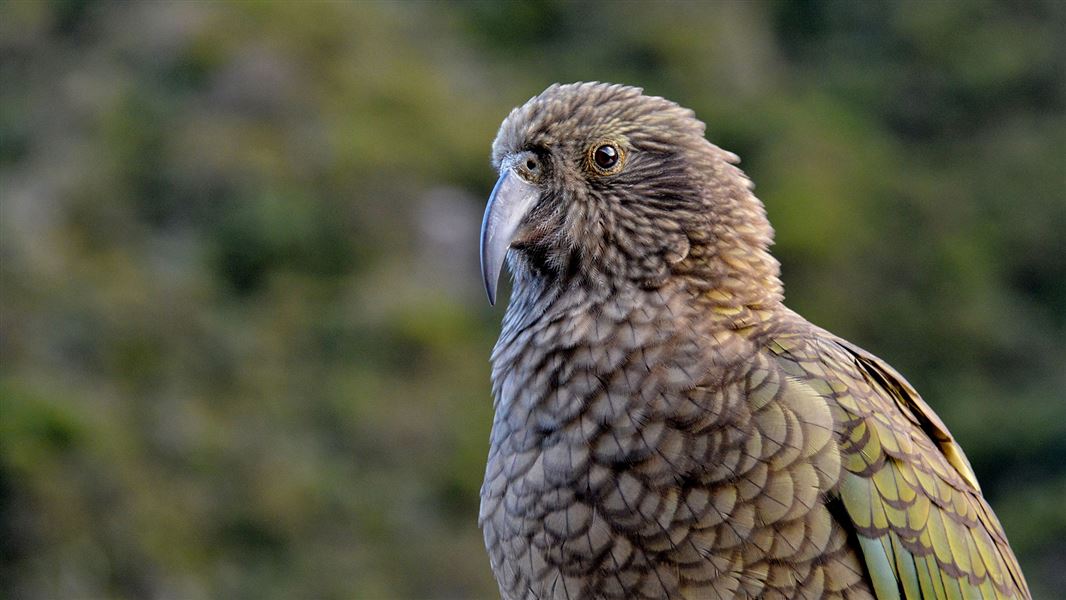Archived content: This media release was accurate on the date of publication.
Date: 30 June 2021
Kea, a taonga species for Ngāi Tahu, are found throughout South Island mountains and forests and are in decline where threats from predators are not managed.
A DOC five-year study aims to shed light on why kea populations are declining faster on the eastern side of the Southern Alps/Kā Tiritiri o te Moana than on the west, to improve predator management.
Researchers have monitored a sample of 45 kea between Arthur’s Pass and Lewis Pass east of the main divide since 2019. The birds are tracked by radio transmitters and any that die are retrieved to determine the cause.
DOC Science Advisor Josh Kemp says results from the first two years show a sharp increase in monitored kea being preyed upon in the years following the massive beech mast (seeding) in 2019.
“Just 6% of the monitored kea were killed by predators in 2019 but this jumped to 40% in 2020, most of which were eaten by stoats and feral cats.
“This is the first time we’ve recorded such a large proportion of radio tagged adult kea, both males and females, being killed.
“Kea are strong flyers but spend most of their time on the ground, foraging for food and roosting, which is why they are so vulnerable to predators.”
This research is providing valuable evidence about threats to kea east of the main divide, which will inform future predator control strategies, says Josh Kemp.
DOC controls predators over about 40% of kea habitat on public conservation land through its Tiakina Ngā Manu programme focussing on rats, stoats and possums, which leads to increased kea nesting success and chick survival. Work is also underway into potential new tools for the control of feral cats.
Analysis of the dead kea showed stoats and feral cats killed 13 birds. Stoats were responsible for about half of those deaths and cats the other half.
A survival rate of just 60% of adult kea is very unhealthy for the population and is concerning. In comparison, kea survival estimates for previous studies in western South Island areas were mostly above 90%.
The sharp increase in predation of the study kea coincided with the crash of mouse populations in eastern valleys the year after the beech mast. This may have contributed to stoats taking larger prey, like kea but further work is required to confirm whether this is the case, says Josh Kemp.
The exact cause of the increase in cat predation is unknown. Anecdotal reports show feral cat numbers have been increasing in the study area over the past five years. Kea have not previously been recorded being killed by feral cats in western areas, such as Westland Tai Poutini and Kahurangi national parks.
Most of the kea tracked in the study live in areas where predators are not currently controlled. However, two birds were killed by either stoats or feral cats in the Hawdon valley in Arthur’s Pass National Park where predator control targets rats and stoats to protect kākāriki karaka/orange-fronted parakeet and other native species. There are plans to start trapping feral cats in this area.
The eastern kea study will continue until 2023 and help inform future kea conservation management. It is part of a wider research programme aimed at improving the management of predators, reducing negative human interactions with kea, and better understanding kea population trends.
Background information
The kea population is estimated at 3000-7000 and the species is classed as ‘Nationally Endangered’.
DOC is working in partnership with Ngāi Tahu to develop a strategy for kea recovery that draws from mātauranga Māori as well as western science. The Kea Conservation Trust supports kea conservation and works closely with DOC on many research and management projects.
Feral cats are controlled mostly by trapping, which is labour intensive. There are currently limited tools for controlling feral cats at a landscape scale. DOC is leading the development of baits for use with the toxin PAPP (para-aminopropiophenone) for more efficient ground-based and potentially aerial control of stoats and feral cats, although this work is at an early stage.
Blog post: The hidden risk for the world’s smartest bird
Contact
For media enquiries contact:
Email: media@doc.govt.nz
